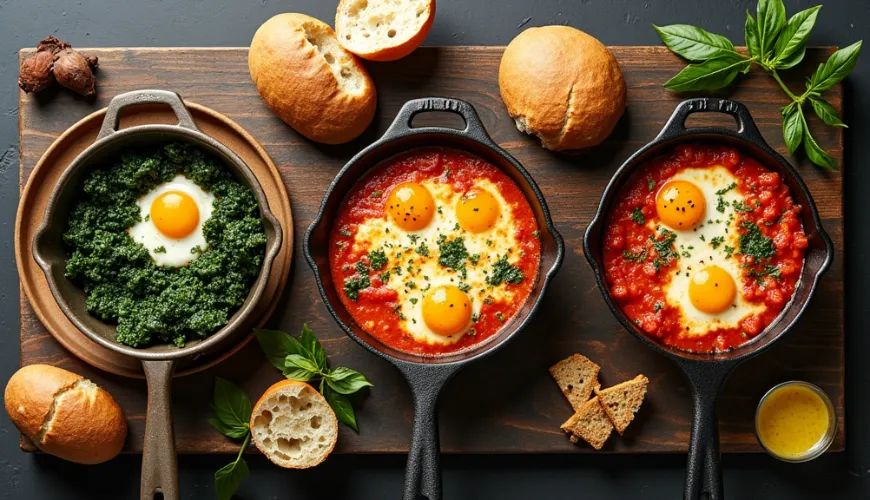
Tteokbokki as an Iconic Dish that Combines Culture and Flavor

Korean Tteokbokki - Spicy Rice Cakes that Have Conquered the World
Korean cuisine has experienced unprecedented growth in recent years. Dishes like kimchi, bibimbap, and kimbap have long settled on European tables. But one dish is possibly winning the hearts of lovers of spicier flavors the most – tteokbokki, or rice cakes in spicy sauce. This traditional Korean dish, once a street specialty, now graces the tables of luxury restaurants and the profiles of food bloggers on social media. What makes tteokbokki so irresistible, and why is it gaining popularity even in Czech households?
Tteokbokki - A History on a Plate
The word "tteokbokki" (떡볶이) consists of two parts – tteok, meaning "rice cake," and bokki, derived from the verb "bokda," meaning "to fry." Although today's version of tteokbokki is known for its spiciness due to the red paste gochujang, its origin is much older and less spicy. The first mentions of tteokbokki date back to the 14th century, when it was more of a royal dish prepared in a sweet soy sauce – back then, it was called gungjung tteokbokki.
The modern, spicy version as we know it today only emerged in the mid-20th century and is considered a product of a random culinary experiment at a market in Seoul. Since then, tteokbokki has spread like wildfire. In Korea, it remains one of the most popular street foods – quick, filling, and affordable. Today, there are dozens of variations that adjust the sauce, add new ingredients, or change the texture of the rice "cakes" themselves.
What Does Tteokbokki Taste Like?
The basis is cylindrical rice cakes (tteok), which have a chewy to gummy texture – something Europeans might not accept at first, but after a few bites, they become addicted. The sauce is a mix of spicy Korean chili paste gochujang, fish stock, sugar, and garlic. The taste is distinctive, spicy, slightly sweet, and addictive. It often includes fish cakes (odeng), hard-boiled eggs, or vegetables like spring onions or cabbage.
But like any popular dish, tteokbokki is constantly evolving. From Korea, we now also get modern and more sophisticated versions that adjust the flavor to Western palates. Among them are rose tteokbokki and buldak tteokbokki – two variations that definitely deserve attention.
Rose Tteokbokki - A Gentler but Equally Addictive Version
The word "rose" in the name doesn't refer to the flower but to the pink color of the sauce, which is created by mixing the traditional spicy sauce with cream or milk. The result is a milder, creamy texture and less spicy taste, which appeals even to those who usually avoid spicy foods.
Imagine this situation: a family evening at home, the kids want to taste "that Korean dish they saw you eating on Instagram," but the spiciness is a problem for them. Rose tteokbokki is the perfect compromise – it retains the flavor depth and texture of the original, but the sauce is velvety, creamy, and rounder. It also invites further creative modifications – you can add pieces of chicken, mushrooms, or grated cheese.
Buldak Tteokbokki - A Challenge for the Brave
On the opposite end of the spectrum is buldak tteokbokki. The word buldak can be translated as "fire chicken." And that's no exaggeration. This version is intended for those who love extremely spicy foods. Buldak tteokbokki often includes additional chicken, chili flakes (gochugaru), garlic, and sometimes cheese, which is supposed to slightly mellow the taste but mostly serves as a brief relief in an otherwise fiery experience.
In Korea, buldak became popular mainly among young people who seek adrenaline even in food – there are entire challenges where people measure how much buldak food they can eat without crying. Yet, even this variant is becoming a hit outside of Asia because spicy foods simply attract attention. Moreover, capsaicin in chili has been shown to have positive effects on metabolism and mood.
How to Prepare Tteokbokki at Home?
At first glance, preparing tteokbokki may seem complicated – after all, it's not made from European ingredients, and few have fish cakes or gochujang chili paste at home. But the truth is, many of the necessary ingredients are now commonly available in Asian stores or online. And the preparation itself is surprisingly quick.
Basic Recipe for Tteokbokki:
- 200 g rice cakes (tteok)
- 2 tablespoons gochujang paste
- 1 tablespoon sugar (preferably cane sugar)
- 1 teaspoon soy sauce
- 1 clove of garlic, chopped
- 300 ml fish or vegetable stock
- 1 spring onion, chopped
- optionally, fish cakes, hard-boiled eggs, or cabbage
Rice cakes need to be soaked in water for 15 minutes if they are harder (e.g., from the freezer). Then place all ingredients in a pan, bring to a boil, and let simmer gently for 10–15 minutes until the sauce thickens and the cakes soften. Sprinkle with spring onions and serve hot.
For rose tteokbokki, simply add 100 ml of cream (or a plant-based alternative) and a bit of cheese to the sauce above. In the buldak version, you can add chili flakes, more garlic, chicken pieces, and a bit of grated cheese at the end.
Rice Cakes and Environmental Impact
You might be wondering – okay, but how does all this fit into a sustainable lifestyle? Surprisingly well. Tteokbokki is an ideal dish for those who want to reduce meat consumption but still crave a filling and nutritious meal. The traditional recipe doesn't require meat (fish cakes can easily be replaced with tofu or seitan), and most ingredients have a long shelf life, so they don't spoil and don't need to be thrown away.
Moreover, if you opt for homemade preparation, you avoid single-use packaging that you would otherwise receive with a ready meal or delivery. Combined with plant-based broth and seasonal vegetables, tteokbokki can become the star of your vegetarian or vegan kitchen.
Tteokbokki as a Cultural Phenomenon
But tteokbokki is not just food. It's a part of identity, culture, and social life in Korea. People eat it on the street, share it with friends, and often have fond memories associated with it. In the Netflix documentary "Street Food: Asia," for example, one cook describes: "When I was little, we always ate tteokbokki after school, it was like a little celebration."
And perhaps that's why tteokbokki has found its way into the hearts of people outside Korea. It's not just about taste – it's about emotion, ritual, and sharing. Whether you prepare it according to the traditional recipe or venture into experimenting with the rose or buldak version, tteokbokki is a dish that connects people.
Try it – and you might find that one plate is never enough.

